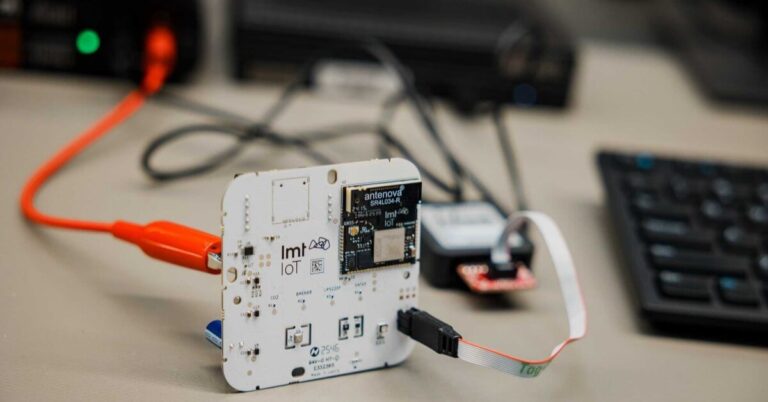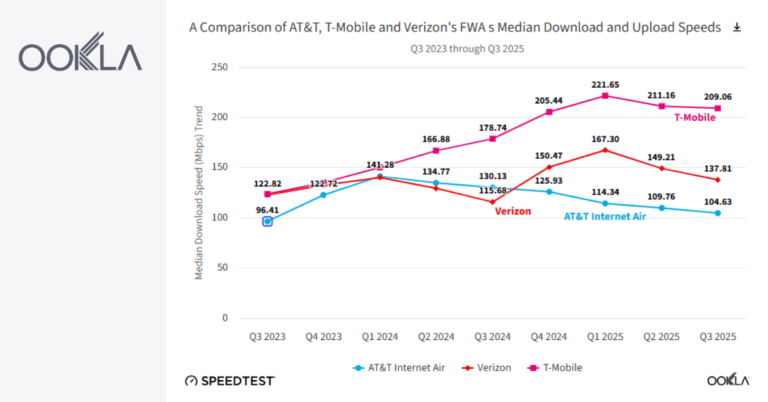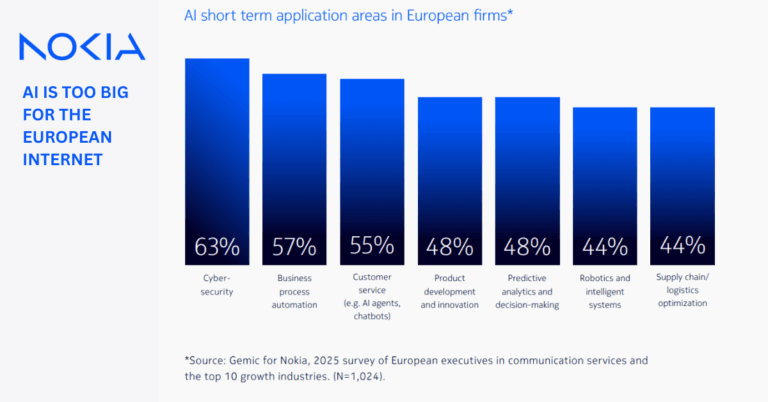Comcast Business has announced that it will collaborate with Nokia to expand its business network coverage to 5G private wireless networks, using the industrial-grade private wireless solution and digitalization enabler platform from Nokia DAC (Digital Automation Cloud).
The non-exclusive arrangement builds on prior wireless initiatives to help Comcast Business pursue its goal of developing connected ecosystems by providing connected solutions on a large scale.
Improving fan experiences in Wells Fargo Center
The Wells Fargo Center in Philadelphia will be home to the first Comcast Business and Nokia showcase deployment during the first quarter of 2022. It will demonstrate how private LTE and 5G networks may assist businesses to enhance critical operations and infrastructure while improving fan experiences.
Arena officials are looking at various applications to use the new private wireless network since people’s devices will not be able to access the CBRS network right away in the Wells Fargo Center.
Applications might include court-side, rink-side, and outdoor video experiences, digital signage in the venue, real-time information about parking flow, or expected wait times on their way out of the venue.
The arena has a huge jumbotron suspended from the center ceiling. Wells Fargo executives are considering using Google Pixel phones to shoot high-end videos for that jumbotron. They’re also considering putting cameras in the tunnel to film Flyers hockey players as they go back and forth.
For Comcast Business, this deployment is less about establishing a showcase network and more about the 5G private networking business launch. They already have a big managed WiFi operation, and private 5G would extend that market.
Comcast Business plans to expand its use of private wireless to various industry verticals, from factories to warehouse complexes to transportation hubs, as it looks beyond the first implementation at the arena.
Comcast’s private wireless network – spectrum and solutions
Comcast Business’ strong networking abilities are enhanced by using private wireless networks, which also offer clients more wireless choices.
When the CBRS spectrum was auctioned in 2020, Comcast was one of the top buyers, acquiring more than $458 million worth of Priority Access Licenses (PALs).
At the Wells Fargo Center, Comcast will utilize both its PALs spectrum and General Authorized Access (GAA) unlicensed spectrum. i.e., they will use both unlicensed and licensed spectrum. Comcast had purchased a lot of CBRS spectrum in their footprint. However, they are also using GAA for capacity management since it’s already there and no one else is using it. Also, it appears identical on the outside.
The 5G private wireless network solution complements Comcast Business’s existing capabilities, including DeepBlue for sophisticated, large-scale WiFi deployments and MachineQ for long-range, low-power, and big-scale IoT solutions. In addition, it’s anticipated that the DeepBlue team will expand its scope to include private wireless networks.
For the Wells Fargo project, Comcast utilizes Nokia’s DAC, an end-to-end private wireless networking and edge computing platform that includes radios, baseband stations, and software. However, the agreement between Comcast and Nokia is not exclusive. Comcast is in discussion with other vendors and may use other manufacturers’ equipment over time.
Comcast Business plans to provide a complete indoor wireless solution. It will continue working with best-in-class hardware, cloud, and next-generation application partners to develop and support future connected systems that help businesses better prepare for the future.
SVP Product at Comcast Business, Bob Victor
“No two businesses are alike, and neither are their networking requirements. With this strategic collaboration, Comcast Business can now offer end-to-end private network services to sports and entertainment facilities as well as corporate customers through a one-stop-shop for sophisticated connectivity solutions,” Bob Victor, SVP Product at Comcast Business, said.
“The unique combination of our network, WiFi expertise, Internet of Things (IoT) capabilities, spectrum, and managed services, will enable enterprises to address their business challenges head-on while ensuring their network infrastructure remains available, reliable, and secure.”
Private wireless networks offer significant advantages for enterprises and governments, including the ability to help them meet their mission-critical infrastructure and operations connection requirements while also fostering innovation in next-generation customer and employee experiences. In addition, businesses will be able to support their rapidly developing ecosystem of connected devices using private wireless networks, which provide faster wireless broadband speed, capacity, improved reliability, and low latency.
Vice President, Enterprise Solutions, Nokia Cloud and Networking Services, Stephan Litjens
“Nokia 5G industrial-grade private wireless network solutions are designed to meet the security, coverage, and performance requirements for a wide range of organizations seeking to restructure their business operations and improve customer experience,” said Stephan Litjens, Vice President Enterprise Solutions, Nokia Cloud and Networking Services. “In selecting Nokia as a private wireless connectivity partner, Comcast Business can combine its technical expertise, market reach, and expanded network solutions to become a leading provider of private wireless to enterprises in North America.”
President of Business Operations for Wells Fargo Center, Valerie Camillo
“Wells Fargo Center is one of the world’s busiest and most innovative sports and entertainment venues, and thanks to this partnership with Comcast Business and Nokia, in addition to our $300 million Transformation project, our arena will remain on the cutting edge of the modern fan experience for years to come,” said Valerie Camillo, President of Business Operations for Wells Fargo Center. “This state-of-the-art network will not only provide unprecedented experiences for our fans, but it will also bolster our health and safety measures, our security protocols, and much more.”







































